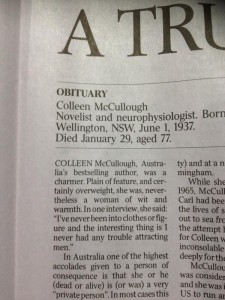For every woman who speaks out about her experiences or reports the abuse, many more remain silent through fear, shame, or simply because they don’t know who to turn to. Many don’t even tell their closest friends, family members, or general practitioner, let alone pick up the phone to call a domestic violence hotline or counselling service.
This reluctance to seek help is alarming when we consider the grim statistics on domestic violence. One in five women in Australia have experienced physical or sexual abuse at the hands of an intimate partner. One woman is killed each week by her current or ex-husband, partner, or boyfriend. Seventeen women have already died this year, and it’s only March.
Thanks to activists such as Rosie Batty, there has been a renewed focus on challenging gender stereotypes and men’s attitudes towards women in an attempt to prevent violence from occurring. While this is certainly a vital piece of the puzzle, the patriarchy is unlikely to be dismantled overnight.
The proposed terms of reference for the Victorian government’s Royal Commission into Family Violence argue that domestic violence requires a coordinated response across government, services, and the community. But this will be difficult and time-consuming to achieve, particularly in light of the Abbott government’s cuts to critical domestic violence services.
Clearly, we need to think more innovatively about how we respond to this hidden epidemic. Technology – specifically, the internet and smartphone apps – may provide part of the solution.
Existing technology
The internet and smartphone apps are readily available to large numbers of people. They allow users to access help, information, or support anonymously and privately.
In the context of domestic violence, women who may not yet be ready to name their experiences as “domestic violence” can use the web or smartphone apps to assess their relationships and figure out the next steps. Most importantly, women can access help without the need to disclose the abuse to anybody, which may reduce concerns about judgement and stigma.
Globally, many countries are beginning to explore the possibilities for web- and smartphone-based applications to respond to domestic violence. In the United States, South Africa, and New Zealand, for example, interactive tools are being developed and evaluated to help women make decisions and learn about respectful relationships.
In Australia, we are also starting to recognise the potential of technology, with several domestic violence apps such as Aurora and iMatter already helping women connect to formal services and access practical information. iMatter, which is targeted at younger women, also promotes self-respect and empowerment.
Towards tailored support
Technology has the potential to do more than inform and link to services; it can help provide the individualised, tailored support women need when experiencing abuse at the hands of an intimate partner.
Our research team is developing a web tool called I-DECIDE, which allows women to reflect on an unhealthy or unsafe relationship and manage their situation.
I-DECIDE uses validated tools to identify the type of abuse (emotional, physical, or combined) a woman may be experiencing, as well as her level of danger and risk, and provides feedback. It also incorporates reflective exercises around relationship health and safety.
Drawing on a face to-face counselling program for general practitioners, I-DECIDE uses motivational interviewing and non-directive problem-solving techniques. These help women determine their own needs and the steps they might take to improve their safety and well-being, acknowledging that the step chosen may not always be leaving the relationship.
I-DECIDE responds to women’s individual priorities by providing strategies and resources that are unique to her situation, rather than general standardised links to information and resources. Perhaps most importantly, the program culminates in an individualised “action plan”.
Preliminary testing has been positive. One woman commented that after using I-DECIDE:
I feel affirmed and deserving. I feel it helped me recognise what I had been prioritising over my own health and well-being, and reminded me to keep perspective about my partner’s behaviour.
Potential barriers
There are, however, some challenges that need to be addressed when harnessing technology to respond to domestic violence.
The rise of online abuse and cyber-stalking by partners or ex-partners is a major concern. Appropriate security measures need to be put in place to ensure women’s safety when using websites or apps.
Additionally, it’s difficult to address the whole spectrum of relationship issues with one website or app. Telephone and face-to-face contact will still play an important role in responding to women’s needs.
Any response approach has the risk of alienating women through use of inappropriate language. Many women will not identify with “domestic violence”, “family violence” or “violence against women” language or services. We have carefully called this website “I-DECIDE About My Relationship” in an attempt to reach out to women who may not have named their relationships as abusive.
I-DECIDE is currently being evaluated through a randomised controlled trial, which will determine its effectiveness in addressing domestic violence in the wider population. Women eligible for the trial can access I-DECIDE immediately. It will be made available to all women in 2016.
If you or someone you know would like to participate in the I-DECIDE project, visit the website.
Anyone at risk of family and domestic violence and/or sexual assault can seek help 24 hours a day, seven days a week, either online or by calling 1800 RESPECT (1800 737 732). Information is also available in 28 languages other than English.
Read other articles in The Conversation’s ongoing domestic violence coverage.
![]()
This article was originally published on The Conversation.
Read the original article.


















